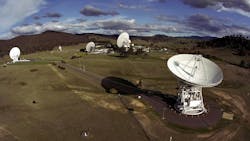NASA starts new dish for its Deep Space Network, marks 60 years in Canberra
CANBERRA, Australia - NASA’s Deep Space Network facility in Canberra, Australia celebrated its 60th anniversary on March 19 while also breaking ground on a new radio antenna. The pair of achievements are major milestones for the network, which communicates with spacecraft all over the solar system using giant dish antennas located at three complexes around the globe, NASA's Jet Propulsion Laboratory reports. Continue reading original article.
The Military & Aerospace Electronics take:
11 April 2025 -The National Aeronautics and Space Administration (NASA) says that in addition to constructing more antennas like Canberra’s Deep Space Station 33, "NASA is looking to the future by also experimenting with laser, or optical, communications to enable significantly more data to flow to and from Earth. The Deep Space Network currently relies on radio frequencies to communicate, but laser operates at a higher frequency, allowing more data to be transmitted."
"These new technologies have the potential to boost the science and exploration returns of missions traveling throughout the solar system," said Amy Smith, deputy project manager for the Deep Space Network at JPL, which manages the network. "Laser and radio communications could even be combined to build hybrid antennas, or dishes that can communicate using both radio and optical frequencies at the same time. That could be a game changer for NASA."
Related: NASA taps UAE to provide gateway airlock on first lunar space station
Related: NASA challenge team gives space thruster commercial boost
Jamie Whitney, Senior Editor
Military + Aerospace Electronics
